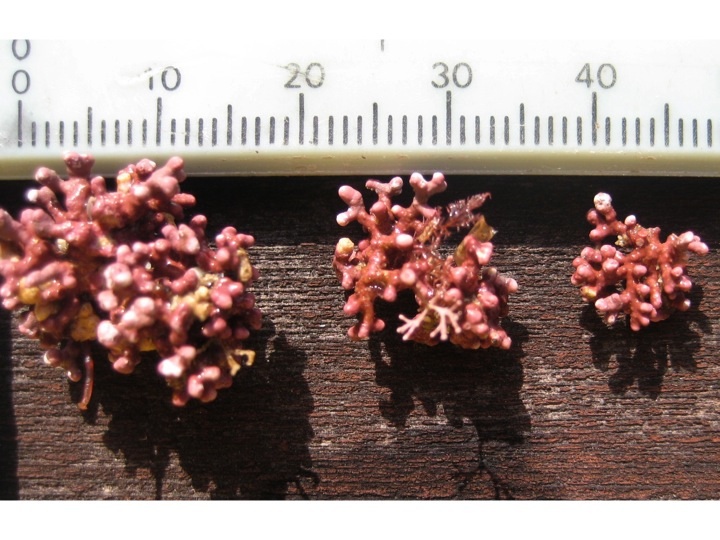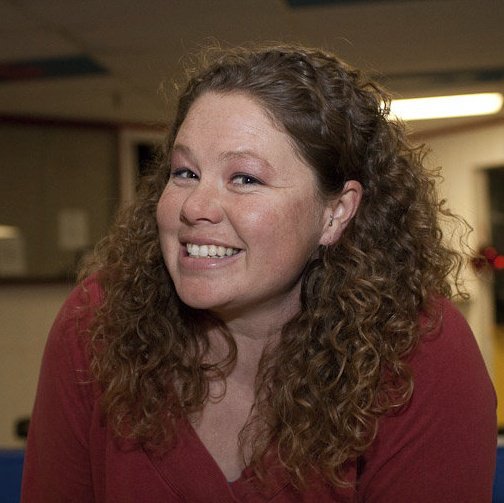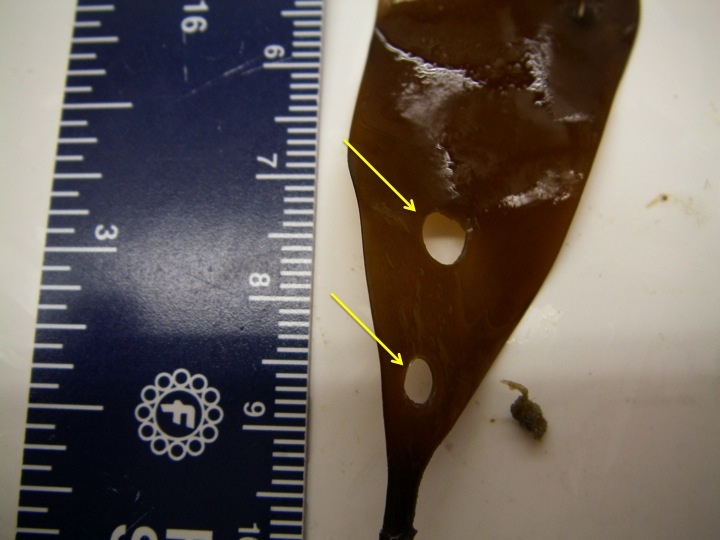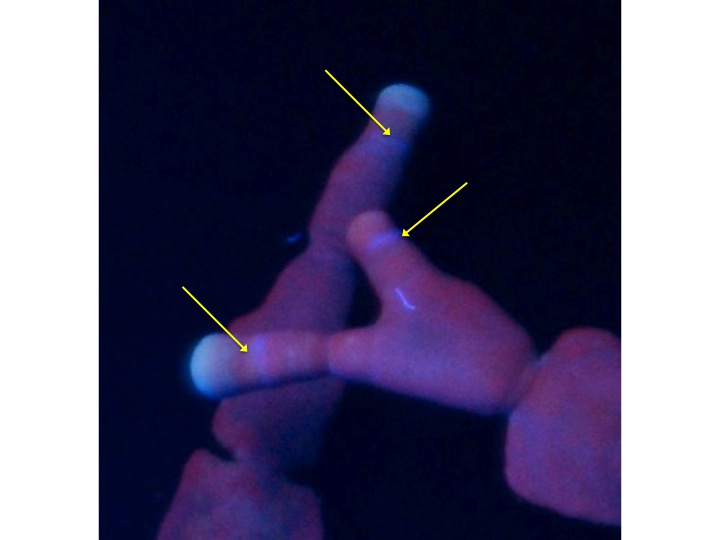

by Jasmine Ruvalcaba, Phycology Lab
edited by Brynn Hooton
We’ve all heard the giant kelp Macrocystis can grow up to one meter per day. So, how do phycologists, people who study seaweeds, measure growth of different species of algae? With most, you can use a ruler of some sort. For instance, Dr. Graham, advisor of the phycology lab, has a National Science Foundation grant going right now to look at effects of climate change on intertidal and subtidal species. One factor he looks as is algal growth. To do so, we punch holes in the vegetative blade with a regular, run of the mill one-hole puncher near the base of the seaweed, and then each month go back to the same plants, and punch a new hole. We measure from the base of the blade to new the punch, from the new punch to the old punch, and the old punch to the tip of the blade. Wow, sounds like a lot to do underwater, right? Practice makes perfect.

That method is great for species that are fleshy and can grow centimeters per day, but how do you measure growth with calcified species, that grow very slowly? That’s what Paul Tompkins and I, Jasmine Ruvalcaba, are doing as a part of our thesis research. Paul studies rhodoliths, which are calcified red algae that form “beds” over soft sediments all over the world. I am studying their relatives, the articulated species. In a nut-shell, we soak our plants in stains anywhere from 5 minutes to days, depending on what type of stain we’re using, and let the stain mark the alga’s outer cell walls. After the plant is stained, we then put it back in clean seawater and let it grow. Any new parts of the plant that have grown after we took the plant out of the stain should be visible, and we know how long it’s taken to make this new growth. So, here is what we see…..


Keep in touch to read about my future adventures with coralline algae!

